- Home
- H. G. Wells
The First Men in the Moon Page 24
The First Men in the Moon Read online
Page 24
XXIII AN ABSTRACT OF THE SIX MESSAGES FIRST RECEIVED FROM MR. CAVOR
The two earlier messages of Mr. Cavor may very well be reserved forthat larger volume. They simply tell, with greater brevity and witha difference in several details that is interesting, but not of anyvital importance, the bare facts of the making of the sphere and ourdeparture from the world. Throughout, Cavor speaks of me as a man whois dead, but with a curious change of temper as he approaches ourlanding on the moon. “Poor Bedford,” he says of me, and “this pooryoung man”; and he blames himself for inducing a young man, “by nomeans well equipped for such adventures,” to leave a planet “on whichhe was indisputably fitted to succeed” on so precarious a mission. Ithink he underrates the part my energy and practical capacity played inbringing about the realisation of his theoretical sphere. “We arrived,”he says, with no more account of our passage through space than if wehad made a journey of common occurrence in a railway train.
And then he becomes increasingly unfair to me. Unfair, indeed, to anextent I should not have expected in a man trained in the search fortruth. Looking back over my previously written account of these things,I must insist that I have been altogether juster to Cavor than he hasbeen to me. I have extenuated little and suppressed nothing. But hisaccount is:--
“It speedily became apparent that the entire strangeness of ourcircumstances and surroundings--great loss of weight, attenuated buthighly oxygenated air, consequent exaggeration of the results ofmuscular effort, rapid development of weird plants from obscure spores,lurid sky--was exciting my companion unduly. On the moon his characterseemed to deteriorate. He became impulsive, rash, and quarrelsome. Ina little while his folly in devouring some gigantic vesicles and hisconsequent intoxication led to our capture by the Selenites--before wehad had the slightest opportunity of properly observing their ways....”
(He says, you observe, nothing of his own concession to these same“vesicles.”)
And he goes on from that point to say that “We came to a difficultpassage with them, and Bedford mistaking certain gestures oftheirs”--pretty gestures they were!--“gave way to a panic violence. Heran amuck, killed three, and perforce I had to flee with him after theoutrage. Subsequently we fought with a number who endeavoured to barour way, and slew seven or eight more. It says much for the toleranceof these beings that on my recapture I was not instantly slain. We madeour way to the exterior and separated in the crater of our arrival, toincrease our chances of recovering our sphere. But presently I cameupon a body of Selenites, led by two who were curiously different, evenin form, from any of those we had seen hitherto, with larger heads andsmaller bodies, and much more elaborately wrapped about. And afterevading them for some time I fell into a crevasse, cut my head ratherbadly and displaced my patella, and, finding crawling very painful,decided to surrender--if they would still permit me to do so. This theydid, and, perceiving my helpless condition, carried me with them againinto the moon. And of Bedford I have heard or seen nothing more, nor,so far as I can gather, has any Selenite. Either the night overtookhim in the crater, or else, which is more probable, he found thesphere, and, desiring to steal a march upon me, made off with it--only,I fear, to find it uncontrollable, and to meet a more lingering fate inouter space.”
And with that Cavor dismisses me and goes on to more interestingtopics. I dislike the idea of seeming to use my position as his editorto deflect his story in my own interest, but I am obliged to protesthere against the turn he gives these occurrences. He says nothing aboutthat gasping message on the blood-stained paper in which he told, orattempted to tell, a very different story. The dignified self-surrenderis an altogether new view of the affair that has come to him, I mustinsist, since he began to feel secure among the lunar people; and asfor the “stealing a march” conception, I am quite willing to let thereader decide between us on what he has before him. I know I am not amodel man--I have made no pretence to be. But am I _that_?
However, that is the sum of my wrongs. From this point I can edit Cavorwith an untroubled mind, for he mentions me no more.
It would seem the Selenites who had come upon him carried him tosome point in the interior down “a great shaft” by means of what hedescribes as “a sort of balloon.” We gather from the rather confusedpassage in which he describes this, and from a number of chanceallusions and hints in other and subsequent messages, that this “greatshaft” is one of an enormous system of artificial shafts that run,each from what is called a lunar “crater,” downwards for very nearlya hundred miles towards the central portion of our satellite. Theseshafts communicate by transverse tunnels, they throw out abysmalcaverns and expand into great globular places; the whole of the moon’ssubstance for a hundred miles inward, indeed, is a mere sponge of rock.“Partly,” says Cavor, “this sponginess is natural, but very largelyit is due to the enormous industry of the Selenites in the past. Theenormous circular mounds of the excavated rock and earth it is thatform these great circles about the tunnels known to earthly astronomers(misled by a false analogy) as volcanoes.”
It was down this shaft they took him, in this “sort of balloon” hespeaks of, at first into an inky blackness and then into a region ofcontinually increasing phosphorescence. Cavor’s despatches show him tobe curiously regardless of detail for a scientific man, but we gatherthat this light was due to the streams and cascades of water--“nodoubt containing some phosphorescent organism”--that flowed ever moreabundantly downward towards the Central Sea. And as he descended, hesays, “The Selenites also became luminous.” And at last far below himhe saw, as it were, a lake of heatless fire, the waters of the CentralSea, glowing and eddying in strange perturbation, “like luminous bluemilk that is just on the boil.”
“This Lunar Sea,” says Cavor, in a later passage, “is not a stagnantocean; a solar tide sends it in a perpetual flow around the lunar axis,and strange storms and boilings and rushings of its waters occur, andat times cold winds and thunderings that ascend out of it into thebusy ways of the great ant-hill above. It is only when the water isin motion that it gives out light; in its rare seasons of calm it isblack. Commonly, when one sees it, its waters rise and fall in an oilyswell, and flakes and big rafts of shining, bubbly foam drift with thesluggish, faintly glowing current. The Selenites navigate its cavernousstraits and lagoons in little shallow boats of a canoe-like shape; andeven before my journey to the galleries about the Grand Lunar, who isMaster of the Moon, I was permitted to make a brief excursion on itswaters.
“The caverns and passages are naturally very tortuous. A largeproportion of these ways are known only to expert pilots among thefishermen, and not infrequently Selenites are lost for ever intheir labyrinths. In their remoter recesses, I am told, strangecreatures lurk, some of them terrible and dangerous creatures thatall the science of the moon has been unable to exterminate. There isparticularly the Rapha, an inextricable mass of clutching tentaclesthat one hacks to pieces only to multiply; and the Tzee, a dartingcreature that is never seen, so subtly and suddenly does it slay....”
He gives us a gleam of description.
“I was reminded on this excursion of what I have read of the MammothCaves; if only I had had a yellow flambeau instead of the pervadingblue light, and a solid-looking boatman with an oar instead of ascuttle-faced Selenite working an engine at the back of the canoe,I could have imagined I had suddenly got back to earth. The rocksabout us were very various, sometimes black, sometimes pale blue andveined, and once they flashed and glittered as though we had come intoa mine of sapphires. And below one saw the ghostly phosphorescentfishes flash and vanish in the hardly less phosphorescent deep. Then,presently, a long ultramarine vista down the turgid stream of one ofthe channels of traffic, and a landing-stage, and then, perhaps, aglimpse up the enormous crowded shaft of one of the vertical ways.
“In one great place heavy with glistening stalactites a number of boatswere fishing. We went alongside one of these and watched the long-armedfishing Selenites winding in a net. They were little, hunch
backedinsects, with very strong arms, short, bandy legs, and crinkledface-masks. As they pulled at it that net seemed the heaviest thingI had come upon in the moon; it was loaded with weights--no doubt ofgold--and it took a long time to draw, for in those waters the largerand more edible fish lurk deep. The fish in the net came up like a bluemoonrise--a blaze of darting, tossing blue.
“Among their catch was a many-tentaculate, evil-eyed black thing,ferociously active, whose appearance they greeted with shrieks andtwitters, and which with quick, nervous movements they hacked to piecesby means of little hatchets. All its dissevered limbs continued to lashand writhe in a vicious manner. Afterwards, when fever had hold ofme, I dreamt again and again of that bitter, furious creature risingso vigorous and active out of the unknown sea. It was the most activeand malignant thing of all the living creatures I have yet seen in thisworld inside the moon....
* * * * *
“The surface of this sea must be very nearly two hundred miles (ifnot more) below the level of the moon’s exterior; all the cities ofthe moon lie, I learnt, immediately above this Central Sea, in suchcavernous spaces and artificial galleries as I have described, and theycommunicate with the exterior by enormous vertical shafts which openinvariably in what are called by earthly astronomers the ‘craters’ ofthe moon. The lid covering one such aperture I had already seen duringthe wanderings that had preceded my capture.
“Upon the condition of the less central portion of the moon I have notyet arrived at very precise knowledge. There is an enormous system ofcaverns in which the mooncalves shelter during the night; and thereare abattoirs and the like--in one of these it was that I and Bedfordfought with the Selenite butchers--and I have since seen balloons ladenwith meat descending out of the upper dark. I have as yet scarcelylearnt as much of these things as a Zulu in London would learn aboutthe British corn supplies in the same time. It is clear, however, thatthese vertical shafts and the vegetation of the surface must play anessential rôle in ventilating and keeping fresh the atmosphere of themoon. At one time, and particularly on my first emergence from myprison, there was certainly a cold wind blowing _down_ the shaft, andlater there was a kind of sirocco upward that corresponded with myfever. For at the end of about three weeks I fell ill of an indefinablesort of fever, and in spite of sleep and the quinine tabloids that veryfortunately I had brought in my pocket, I remained ill and frettingmiserably, almost to the time when I was taken into the presence of theGrand Lunar, who is Master of the Moon.
“I will not dilate on the wretchedness of my condition,” he remarks,“during those days of ill-health.” And he goes on with great amplitudewith details I omit here. “My temperature,” he concludes, “keptabnormally high for a long time, and I lost all desire for food. Ihad stagnant waking intervals, and sleep tormented by dreams, and atone phase I was, I remember, so weak as to be earth-sick and almosthysterical. I longed almost intolerably for colour to break theeverlasting blue....”
He reverts again presently to the topic of this sponge caught lunaratmosphere. I am told by astronomers and physicists that all he tellsis in absolute accordance with what was already known of the moon’scondition. Had earthly astronomers had the courage and imagination topush home a bold induction, says Mr. Wendigee, they might have foretoldalmost everything that Cavor has to say of the general structure ofthe moon. They know now pretty certainly that moon and earth are notso much satellite and primary as smaller and greater sisters, made outof one mass, and consequently made of the same material. And sincethe density of the moon is only three-fifths that of the earth, therecan be nothing for it but that she is hollowed out by a great systemof caverns. There was no necessity, said Sir Jabez Flap, F.R.S., thatmost entertaining exponent of the facetious side of the stars, that weshould ever have gone to the moon to find out such easy inferences,and points the pun with an allusion to Gruyère, but he certainly mighthave announced his knowledge of the hollowness of the moon before.And if the moon is hollow, then the apparent absence of air and wateris, of course, quite easily explained. The sea lies within at thebottom of the caverns, and the air travels through the great sponge ofgalleries, in accordance with simple physical laws. The caverns of themoon, on the whole, are very windy places. As the sunlight comes roundthe moon the air in the outer galleries on that side is heated, itspressure increases, some flows out on the exterior and mingles with theevaporating air of the craters (where the plants remove its carbonicacid), while the greater portion flows round through the galleries toreplace the shrinking air of the cooling side that the sunlight hasleft. There is, therefore, a constant eastward breeze in the air of theouter galleries, and an up-flow during the lunar day up the shafts,complicated, of course, very greatly by the varying shape of thegalleries, and the ingenious contrivances of the Selenite mind....

 Ann Veronica: A Modern Love Story
Ann Veronica: A Modern Love Story The Time Machine
The Time Machine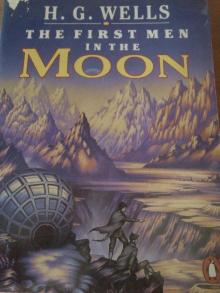 The First Men in the Moon
The First Men in the Moon The Stolen Bacillus and Other Incidents
The Stolen Bacillus and Other Incidents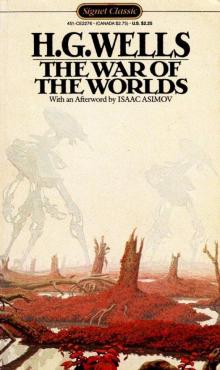 The War of the Worlds
The War of the Worlds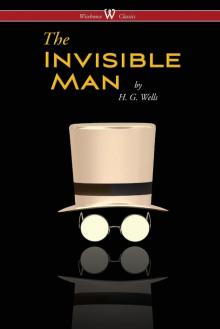 The Invisible Man: A Grotesque Romance
The Invisible Man: A Grotesque Romance The Island of Doctor Moreau
The Island of Doctor Moreau The Door in the Wall, and Other Stories
The Door in the Wall, and Other Stories The Best Science Fiction Stories of H G Wells
The Best Science Fiction Stories of H G Wells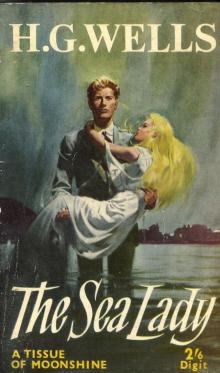 The Sea Lady
The Sea Lady The Wonderful Visit
The Wonderful Visit Love and Mr. Lewisham
Love and Mr. Lewisham Marriage
Marriage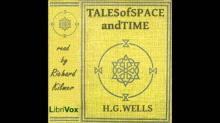 Tales of Space and Time
Tales of Space and Time The War of the Worlds (Penguin Classics)
The War of the Worlds (Penguin Classics) Twelve Stories and a Dream
Twelve Stories and a Dream The Food of the Gods and How It Came to Earth
The Food of the Gods and How It Came to Earth Tono-Bungay
Tono-Bungay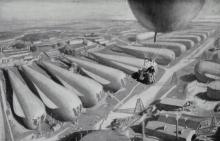 The War in the Air
The War in the Air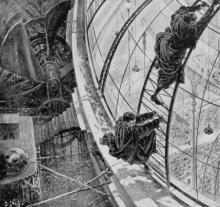 The Sleeper Awakes
The Sleeper Awakes The Country of the Blind and Other Stories
The Country of the Blind and Other Stories Kipps
Kipps The World Set Free
The World Set Free The Country of the Blind and other Selected Stories
The Country of the Blind and other Selected Stories Ann Veronica
Ann Veronica Ann Veronica a Modern Love Story
Ann Veronica a Modern Love Story The Time Machine and The War of the Worlds
The Time Machine and The War of the Worlds Time Machine and The Invisible Man (Barnes & Noble Classics Series)
Time Machine and The Invisible Man (Barnes & Noble Classics Series) The Time Machine and The Invisible Man
The Time Machine and The Invisible Man The Island of Dr. Moreau
The Island of Dr. Moreau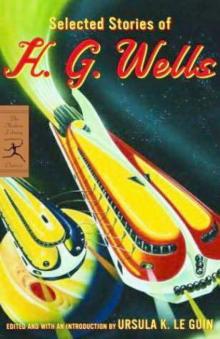 Selected Stories of H. G. Wells
Selected Stories of H. G. Wells Island of Dr. Moreau
Island of Dr. Moreau THE NEW MACHIAVELLI
THE NEW MACHIAVELLI